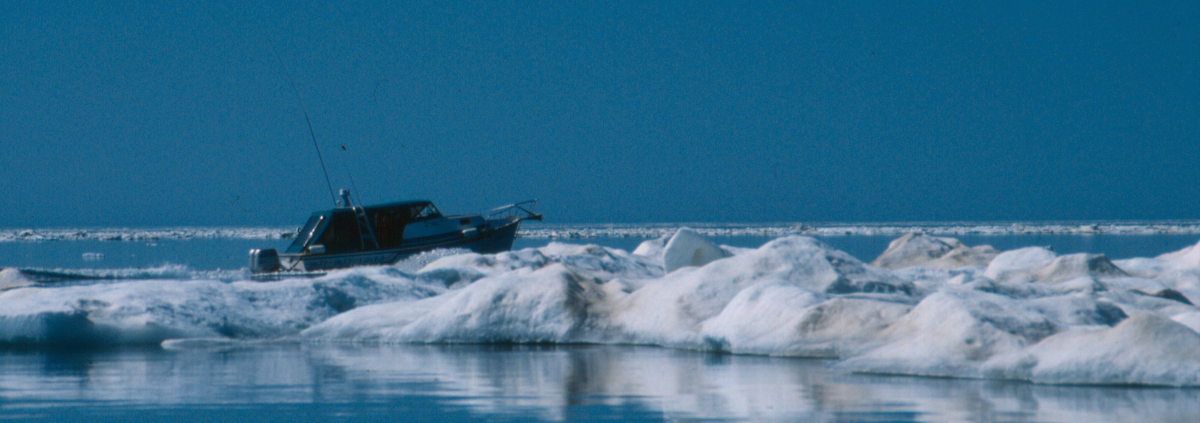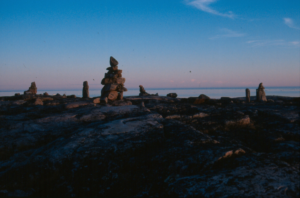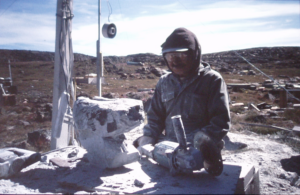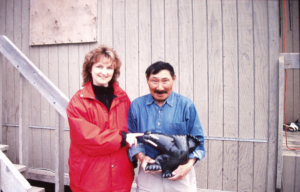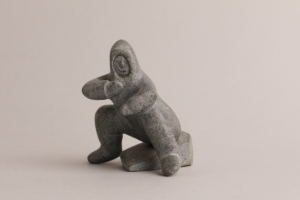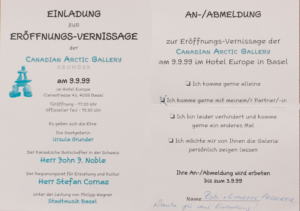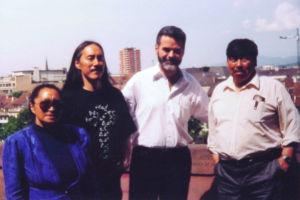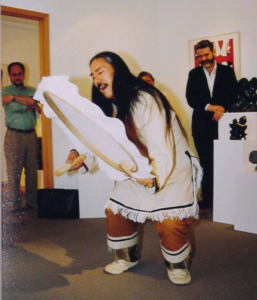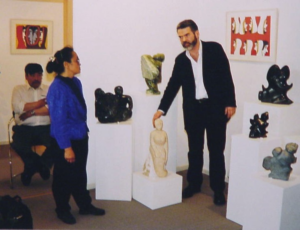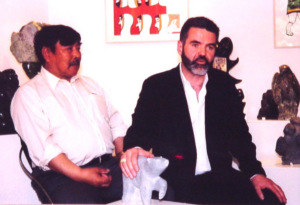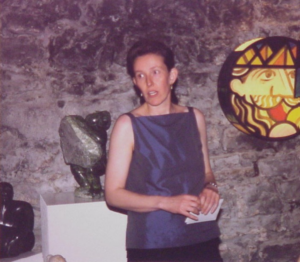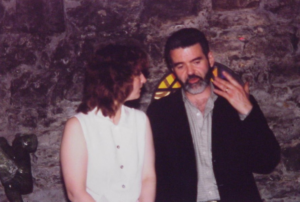On our first trip to the Arctic, we first visited Kinngait. We spent the first night in a house on the beach before setting off on our journey to an outpost camp.
On the way to the camp, we passed floating ice, rock faces covered in birds’ nests and visited Inukshuk Point. Tradition has it that people set off on long journeys from this point and left a souvenir in the form of an Inukshuk before they left, so that they could find their way back safely to this place.
Inukshuk Point at dusk
(Photo: © Canadian Arctic Gallery, Switzerland, July 2002)
The three-day camp experience involved traveling there, setting up the camp, fishing, preparing the fish, seal hunting in the fog, preparing and cooking the seal, taking down the camp and traveling back. The 7-hour boat trip meant that you could still feel the swell on land afterwards.
Nevertheless, we explored Kinngait and met some artists who were working in front of their sheds. Word had already spread that two ‘Qallunaat’ (meaning white/non-Inuit) from Switzerland were looking for new artworks for their gallery, which specializes in Inuit art, so we were welcomed with open arms.
Aqjangajuk Shaa during a short break
(Photo: © Canadian Arctic Gallery, Switzerland, July 2002)
Aqjangajuk Shaa even took a break so that we could photograph him in front of a work of art in progress. Although we couldn’t talk directly, we found a way to communicate through his son Alariaq Shaa – who was sculpting next door – and so at the end of our stay in Kinngait we managed to purchase the dancing walrus that Aqjangajuk had created during our stay.
Aqjangajuk Shaa and Ursula Grunder at the handover of the dancing walrus in front of his home
(Photo: © Canadian Arctic Gallery, Switzerland, July 2002)
We are extremely grateful that we were lucky enough to meet Aqjangajuk in person. He was one of the great sculptors in Kinngait and has passed on his knowledge to his sons (Pudlalik, Alariaq and Qiatsuq) and his grandchildren (Salomonie and Samonie). Our meeting and conversation with Aqjangajuk and Alariaq Shaa showed us why his dancing walruses and bears radiate such cheerfulness. Aqjangajuk was a kind-hearted and cheerful man who was always ready for a joke.
It was an impressive stay in Kinngait, from which we took home a wealth of experience, many valuable encounters and memories that will last a lifetime.

